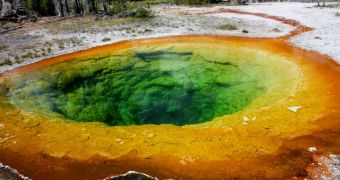A group of scientists at the Cambridge-based Massachusetts Institute of Technology (MIT) say that they have recently been able to draw inspiration from nature, and think of an entirely new approach of harvesting energy from the Sun. Their work could lead to new solar conversion technologies.
At this point, commercial solar cells are the primary means through which the Sun's radiations are transformed into electricity. The average level of conversion efficiency is 20 percent, meaning that only one fifth of the amount of light that falls on the solar cells gets transformed into energy.
The industry therefore considered even a 1-percent improvement in efficiency as a major step forward. However, the postdoctoral researcher that led the MIT group explains that deep-sea bacteria, for example, are capable of harvesting up to 98 percent of the small amount of light that reaches them.
Granted, nature has had a few billion years of head start, but scientists are beginning to catch up. The MIT group was able to model the light-capturing method used by deep-sea bacteria in the lab, and then spent a good deal of time trying to figure out how it worked.
MIT Research Laboratory of Electronics researcher Dörthe M. Eisele says that this line of work could lead to the development of entirely new methods for harvesting light. However, experts first need to understand the fundamental processes that underlie photosynthesis in nature.
Details of the observations the team made during the recent study were published in the July 1 issue of the esteemed journal Nature Chemistry. The group created the artificial, self-assembling system from dye molecules and double-walled carbon nanotubes (DWCNT).
“It is one of nature’s great secrets, how to harvest light so efficiently,” Eisele explains. She says that, while DWCNT are unlikely to be used in practical applications, they did make for the most efficient test material, helping the team proof certain concepts it was interested in testing.
“We don’t want to improve the efficiency of solar cells we have now. We want to learn from nature how to build entirely new light-harvesting devices,” the expert adds. Scientists from Humboldt University, University of Texas in Austin and University of Groningen were also part of the work.
“The researchers used exquisite experiments to test how the nanoscale components of this system interact after photoexcitation. [This] provides important insights into the design of large assemblies of molecules for applications in ‘light harvesting',” comments Gregory Scholes.
The expert, who holds an appointment as the D.J. LeRoy Distinguished Professor of Chemistry at the University of Toronto, was not part of the research effort.

 14 DAY TRIAL //
14 DAY TRIAL //